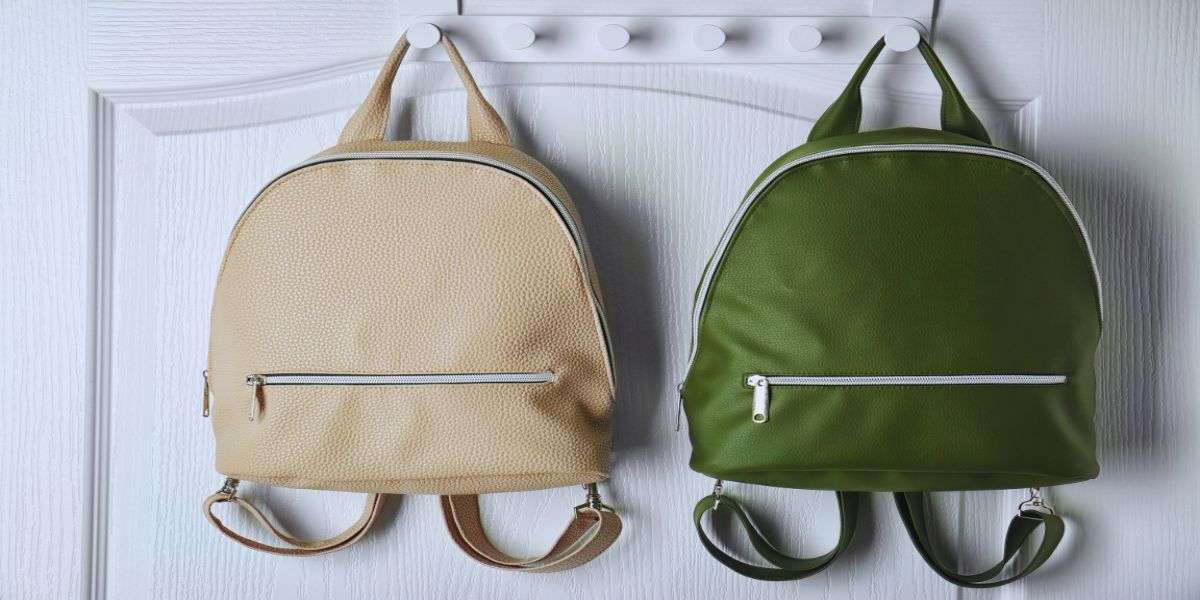To buy a virtual credit card with Bitcoin or stablecoins instantly, choose a reliable provider that supports cryptocurrency transactions. Create an account and link your cryptocurrency wallet. Then, select a virtual card, enter your payment details, and confirm the purchase. Check for security features and transaction limits. Ensure your wallet has sufficient funds to complete the transaction. By following these steps, you’ll enhance your online security while enjoying the benefits of digital payments, paving the way for informed decisions ahead.
Understanding Virtual Credit Cards
Virtual credit cards are digital alternatives to traditional plastic cards, designed to enhance online security and privacy.
You can choose from various virtual card types, including single-use cards, which are ideal for one-time transactions, and reloadable cards that can be used multiple times. These cards generate unique numbers for each transaction, minimizing the risk of fraud during payment processing.
By using a virtual credit card, you can safeguard your actual card information, ensuring that your financial data remains confidential. Additionally, many virtual card providers offer integration with digital wallets, further streamlining your online purchases.
Understanding these features empowers you to make informed decisions when selecting a virtual credit card that fits your needs.
Benefits of Using Virtual Credit Cards
Using virtual credit cards offers several significant benefits that enhance your online shopping experience.
These cards not only streamline your transactions but also provide additional layers of security.
Here are three key advantages:
- Privacy Protection: Virtual cards mask your actual card details, ensuring your personal information remains secure during virtual shopping.
- Enhanced Security: With features like single-use numbers, you minimize the risk of fraud and unauthorized charges.
- Cost Savings: Many virtual credit cards come with low or no fees, making them a budgeting tool that allows for easy tracking of your spending.
Why Choose Bitcoin or Stablecoins?
As you consider purchasing a virtual credit card, opting for Bitcoin or stablecoins can significantly enhance your transaction experience.
Bitcoin offers several cryptocurrency advantages, including decentralization and global acceptance, allowing you to make transactions securely without relying on traditional banking systems. This can lead to faster processing times and lower fees.
On the other hand, stablecoins provide an attractive option due to their stablecoin stability, which mitigates the volatility often associated with cryptocurrencies. By using stablecoins, you can enjoy the benefits of blockchain technology while maintaining a predictable value, making your purchases more reliable.
Selecting a Reliable Provider
When selecting a reliable provider for a virtual credit card with Bitcoin, it’s essential to research their reputation.
You should evaluate their security features to ensure your financial information remains protected.
Additionally, compare fees and limits to find a provider that meets your needs without unexpected costs.
Research Provider Reputation
Selecting a reliable provider for a virtual credit card is crucial, especially when you’re using Bitcoin for transactions.
To ensure you choose a trustworthy provider, consider the following:
- Provider Reviews: Look for comprehensive reviews across various platforms. These can give you insights into the provider’s reliability and service quality.
- User Testimonials: Pay attention to testimonials from actual users. Genuine feedback can highlight both strengths and weaknesses of the provider.
- Industry Reputation: Research the provider’s standing in the industry. A well-established provider usually indicates a more trustworthy service.
Evaluate Security Features
Ensuring robust security features is essential for any virtual credit card provider, especially if you’re using Bitcoin. Start by checking the encryption standards the provider uses to protect your sensitive information. High-level encryption, such as AES-256, is crucial for safeguarding your data against unauthorized access.
Additionally, look for providers that implement strong fraud prevention measures, such as transaction monitoring and alerts for suspicious activity. These features help identify and mitigate risks before they escalate.
Don’t hesitate to inquire about the provider’s security protocols and certifications, as reputable companies will transparently share this information. By prioritizing security, you’ll safeguard your financial transactions and enjoy peace of mind when using your virtual credit card.
Compare Fees and Limits
Comparing fees and limits is crucial for finding a reliable virtual credit card provider. By evaluating various options, you can ensure you get the best value for your money.
Here are three key aspects to consider:
- Fee Structures: Look for hidden fees, such as activation or maintenance charges, and compare them across providers.
- Monthly/Annual Limits: Check the spending limits imposed by each provider. Some may offer higher limits that suit your needs.
- Transaction Fees: Review the costs associated with each transaction, especially when using Bitcoin or stablecoins.
Creating a Cryptocurrency Wallet
Creating a cryptocurrency wallet is essential for managing your Bitcoin transactions.
You’ll need to choose the right wallet type, set up robust security measures, and fund your wallet to get started.
Understanding these steps will help you safely store and use your digital assets.
Choosing a Wallet Type
When choosing a wallet type for your cryptocurrency, you’ll encounter several options, each designed to meet different needs. Understanding these wallet types is crucial for ensuring wallet security.
Here are three main types to consider:
- Hot Wallets: These are connected to the internet, making them convenient for quick transactions but potentially less secure.
- Cold Wallets: These are offline storage solutions, providing enhanced security against hacks but less accessibility for immediate transactions.
- Hardware Wallets: These are physical devices that store your cryptocurrency securely, combining the benefits of cold storage with user-friendly access.
Selecting the right wallet type can significantly impact your cryptocurrency experience, so choose wisely based on your needs and security preferences.
Setting Up Security
Establishing robust security measures is essential for safeguarding your cryptocurrency wallet. Start by enabling two-factor authentication (2FA) to add an extra layer of protection. This requires a second verification step during login, making unauthorized access significantly harder.
Incorporate biometric security features, such as fingerprint or facial recognition, if your wallet supports them. Adhering to high encryption standards is critical; ensure your wallet uses strong encryption to protect your data.
Always use secure connections, avoiding public Wi-Fi when accessing your wallet. Additionally, choose wallets that implement fraud detection systems to monitor suspicious activities.
Funding Your Wallet
Once you’ve implemented robust security measures for your cryptocurrency wallet, it’s time to focus on funding it.
There are several wallet funding methods you can use, depending on your needs and preferences. Here are three popular cryptocurrency exchange options:
- Bank Transfer: Link your bank account to buy cryptocurrencies directly from exchanges.
- Credit/Debit Card: Use your card for instant purchases, though fees may apply.
- Peer-to-Peer Platforms: Trade directly with others for more flexible transaction terms.
Choose the method that aligns with your goals and offers the best rates.
Ensure you understand the fees and processing times for each option to optimize your funding experience.
With your wallet funded, you’re ready to make transactions!
Purchasing Bitcoin or Stablecoins
To purchase Bitcoin or stablecoins effectively, you need to choose a reliable exchange that offers favorable rates and security features.
Start by researching various platforms, comparing their fees, user reviews, and security measures. Look for exchanges with a solid track record in safeguarding assets.
Next, consider your buying strategies; whether you prefer dollar-cost averaging or making a lump-sum purchase, ensure your approach aligns with current market trends. Staying informed about price fluctuations and overall market sentiment can help you make more informed decisions.
Once you’ve settled on an exchange and strategy, execute your purchase. Monitor your investment regularly to adapt to changing market conditions, ensuring you maximize your gains while minimizing risks.
Registering for a Virtual Credit Card
Before you can use a virtual credit card, you need to register for one through a provider that supports cryptocurrency transactions. The registration requirements usually include specific personal information and verification documents.
Here’s a quick overview of the application process:
- Create an Account: Sign up on the provider’s website by providing your email and creating a secure password.
- Submit Verification Documents: Upload necessary identification, such as a government-issued ID and proof of address, to confirm your identity.
- Agree to Terms: Review and accept the terms of service, ensuring you understand the fees and policies associated with your virtual credit card.
Once you complete these steps, you’ll be ready to obtain your virtual credit card and make transactions.
Linking Your Cryptocurrency Wallet
After successfully registering for your virtual credit card, the next step involves linking your cryptocurrency wallet.
Begin by checking for any wallet compatibility issues with the card provider. Different platforms may support various cryptocurrencies, so ensure your wallet aligns with their requirements.
Once confirmed, navigate to the wallet connection section in your account settings. You’ll typically need to input your wallet address or scan a QR code.
Next, consider the transaction speed comparison between different cryptocurrencies. Bitcoin transactions may take longer due to network congestion, while stablecoins often offer faster processing times.
Selecting a faster option can enhance your purchasing experience. After linking your wallet successfully, you’re ready to proceed with your virtual credit card purchase.
Making the Purchase
Once you’ve linked your cryptocurrency wallet, you’re ready to make your purchase. Follow these steps to complete the transaction smoothly:
- Select the Virtual Card: Choose the virtual credit card that meets your needs, ensuring it supports Bitcoin or stablecoins.
- Input Payment Details: Enter the amount you wish to pay and any required information for the card issuance.
- Confirm Payment: Review your order and initiate the payment. You’ll receive a payment confirmation once the transaction is processed.
Ensure you double-check all details before finalizing. Making the purchase is quick and straightforward, allowing you to enjoy the benefits of a virtual credit card in no time.
Remember to keep an eye on your wallet for the payment confirmation.
Receiving Your Virtual Card Details
Upon successful payment, you’ll receive your virtual card details via email or through the platform’s dashboard. The choice of card delivery methods may vary depending on the provider, but most offer immediate access to your digital card information.
This allows you to start using your virtual credit card without delay. Once you receive the details, follow any instructions provided for digital card activation. Typically, this involves entering your card number, expiration date, and CVV code into your preferred online payment system.
Make sure to keep this information secure, as it’s essential for online transactions. By promptly activating your card, you’ll ensure you’re ready to make purchases wherever virtual cards are accepted.
Using Your Virtual Credit Card Online
Using your virtual credit card online is a straightforward process that allows you to shop securely and conveniently.
To maximize your virtual card usage, follow these steps:
- Enter Your Card Details: When checking out, input your virtual card number, expiration date, and CVV as you’d with a traditional card.
- Verify Your Transaction: Ensure the merchant accepts virtual cards and that your balance covers the purchase amount.
- Keep Track of Your Spending: Regularly monitor your transactions to stay within your budget and avoid overspending.
Managing Your Virtual Card
Managing your virtual card effectively is essential for a smooth online experience.
You’ll want to access its features regularly, monitor your transactions, and ensure that you’re following security measures.
Accessing Card Features
While you may be excited to start using your virtual credit card purchased with Bitcoin, it’s essential to familiarize yourself with its features for effective management.
Accessing features and understanding card functionalities can enhance your experience. Here are three key aspects to consider:
- Balance Management: Regularly check your card balance to ensure you have enough funds for transactions.
- Spending Limits: Set daily or monthly spending limits to maintain control over your expenses.
- Security Settings: Enable two-factor authentication and other security measures to protect your card from unauthorized use.
Monitoring Transactions
After familiarizing yourself with the features of your virtual credit card, you’ll want to keep a close eye on your transactions. Regularly checking your transaction history is essential for tracking your spending and ensuring accuracy.
Most virtual card providers offer an easy-to-navigate dashboard where you can view recent purchases and balances.
Setting up transaction alerts can further enhance your monitoring efforts. These alerts notify you of any significant transactions or unusual activity, helping you stay informed in real time.
Ensuring Security Measures
Ensuring robust security measures for your virtual credit card is crucial in protecting your financial information.
To help you manage your virtual card effectively, consider the following:
- Enable two factor authentication: This adds an extra layer of security, ensuring that only you can access your account.
- Monitor transactions regularly: Keep an eye on all transactions to detect any unauthorized activity promptly.
- Use secure connections: Always perform transactions over secure, encrypted networks to prevent data breaches.
Security Best Practices
To protect your financial information when buying a virtual credit card with Bitcoin, follow essential security best practices.
First, choose a reputable provider that employs strong encryption methods to safeguard your data. This ensures that your transactions remain confidential and secure.
Always enable two-factor authentication on your account to add an extra layer of security. Regularly monitor your account for any suspicious activity, as quick detection is key in fraud prevention.
Use unique, complex passwords and avoid sharing sensitive information over unsecured networks.
Lastly, keep your device’s software updated to protect against vulnerabilities.
Troubleshooting Common Issues
When you encounter issues while buying a virtual credit card with Bitcoin, addressing them promptly can save you time and frustration.
Here are some troubleshooting tips for common errors:
1. Payment Confirmation Delays: If your payment isn’t confirmed, check your transaction status on the blockchain.
Sometimes, network congestion can cause delays.
2. Account Verification Issues: Ensure all required documents are correctly uploaded.
Incomplete verification can halt your purchase.
3. Card Activation Problems: If you can’t activate your virtual card, revisit the instructions provided by the issuer.
Sometimes, specific steps are easy to overlook.
Future Trends in Virtual Payments
As you explore the future of virtual payments, you’ll notice a significant increase in cryptocurrency adoption.
Enhanced security features are likely to become standard, ensuring safer transactions.
Additionally, expect seamless integration with e-commerce platforms, transforming the way you shop online.
Increased Adoption of Cryptocurrencies
Although traditional payment methods still dominate, the increased adoption of cryptocurrencies is reshaping the landscape of virtual payments.
As you navigate the evolving world of digital finance, keep an eye on these key cryptocurrency trends:
- Growing Acceptance: More online retailers and service providers are accepting cryptocurrencies, making transactions easier and more convenient.
- Integration with Financial Services: Banks and fintech companies are increasingly offering crypto-related services, expanding access to digital assets.
- Enhanced User Experience: Streamlined processes for buying virtual credit cards with cryptocurrencies are emerging, catering to a tech-savvy audience.
Embracing these trends won’t only enhance your payment options but also position you at the forefront of the digital finance revolution.
Stay informed and adapt to maximize your financial strategies.
Enhanced Security Features
Enhanced security features are becoming essential in the realm of virtual payments, especially as the number of online transactions continues to rise. To protect your financial information, virtual credit cards now offer enhanced privacy measures. These cards generate unique numbers for each transaction, ensuring your real card details remain hidden.
Moreover, they provide transaction anonymity, which prevents third parties from tracking your spending habits. This added layer of security is crucial in a digital landscape where data breaches are frequent.
Integration With E-Commerce Platforms
With the rise of e-commerce, integrating virtual credit cards into online shopping platforms is becoming increasingly vital. This e-commerce integration enhances customer experience and security while offering diverse payment solutions.
Here are three key benefits:
- Instant Transactions: Virtual credit cards enable quick payments, reducing checkout time and minimizing cart abandonment.
- Enhanced Security: Users can shop confidently, knowing their sensitive information isn’t exposed during transactions.
- Flexibility: Virtual cards can be easily funded with cryptocurrencies like Bitcoin or stablecoins, catering to a broader audience.
As e-commerce continues to evolve, adopting virtual credit cards as a standard payment option will likely become essential for online retailers aiming to stay competitive and meet consumer expectations.
Frequently Asked Questions
Are There Any Fees Associated With Purchasing a Virtual Credit Card?
Yes, there are often transaction fees when purchasing a virtual credit card. Be mindful of hidden costs that may not be immediately apparent, as they can affect the overall value and usability of your card.
Can I Use a Virtual Credit Card for International Transactions?
Can you imagine shopping globally with ease? Yes, you can use a virtual card for international transactions, but ensure it offers robust virtual card security to protect your information while you make purchases abroad.
What if I Lose My Virtual Credit Card Information?
If you lose your virtual credit card information, you should immediately contact your provider. They’ll guide you through security measures and recovery options to secure your account and replace your lost information promptly.
How Long Does It Take to Receive My Virtual Credit Card?
When you order a virtual credit card, you typically receive it within minutes for instant delivery. After activation, you can start using it immediately for online purchases, ensuring a seamless experience with no delays.
Are Virtual Credit Cards Accepted Everywhere Online?
Virtual cards aren’t accepted everywhere online, but they offer significant benefits for online shopping, including enhanced security and privacy. Always check specific merchant policies to ensure acceptance before making a purchase.





